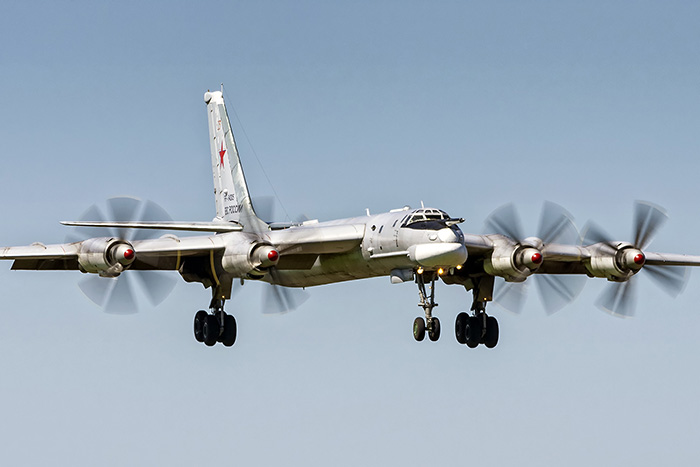The interesting part of the news is that the Tu-95 bombers near Alaska were not intercepted.
On Apr. 22, two Russian Tu-95 Bear H bombers flew into the U.S. Air Defense Identification Zone (ADIZ), in what was the first such incursions since the beginning of the year: pretty routine, except that no U.S. or Canadian fighter jet were launched to intercept the “zombies.”
Quoting U.S. Northern Command and North American Aerospace Defense Command (NORAD) spokesman Capt. Jeff Davis, Washington Free Beacon reported that unlike most of the earlier incursions, U.S. aircraft were not dispatched against the strategic bombers.
In fact, it seems that most but not all the Russian Bears flights near North America cause a scramble by the U.S. or Canadian QRA (Quick Reaction Alert) jets: last year only 6 out of 10 incursions saw U.S. or Canadian aircraft intercept Moscow’s long-range attack aircraft.
The reason may be that the Tu-95s (flying in international airspace) were still quite far from U.S. or Canadian sovereign airspace and/or just briefly transitioned inside the ADIZ. Still it’s a bit unusual that the Russians were not intercepted considered that, for instance, in northern Europe, all the Bear or Backfire flights cause a scramble by the QRA fighters.
The ADIZ is an airspace surrounding a nation or part of it where identification, location, and control of aircraft over land or water is required in the interest of national security. This means that any aircraft flying in these airspaces without authorization may require identification through interception by fighter aircraft in QRA (Quick Reaction Alert).
The North American ADIZ (just like any other ADIZ around the world) extends well beyond the boundaries of the national airspace above territorial waters, but any civil aircraft that enters such closely monitored airspace is tracked and requested to provide its planned course, destination and any additional details that may help its identification.
Military aircraft that do not intend to enter the national airspace are not required to identify themselves or otherwise comply with ADIZ procedures but it is a common practice that any foreign (namely Russian) military aircraft flying close to the U.S. or Canada airspace, within the ADIZ, is intercepted, identified and escorted.
Image credit: Anton Tsyupko / Airforce.ru
















